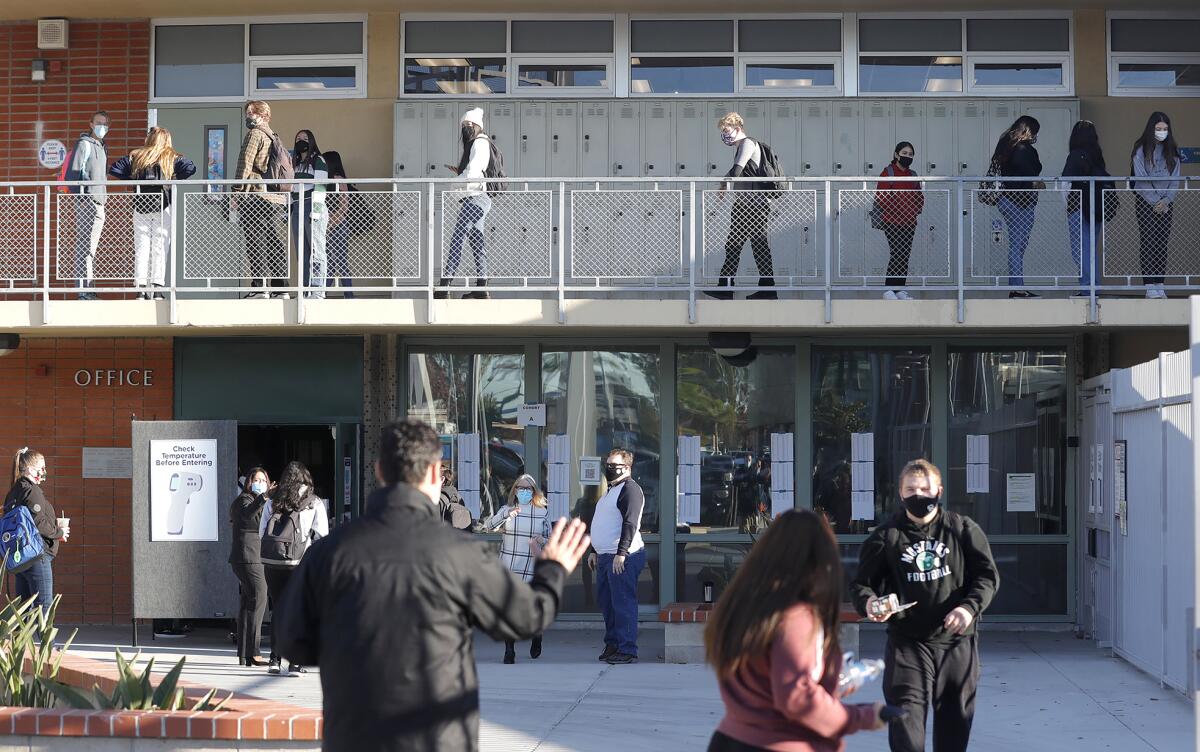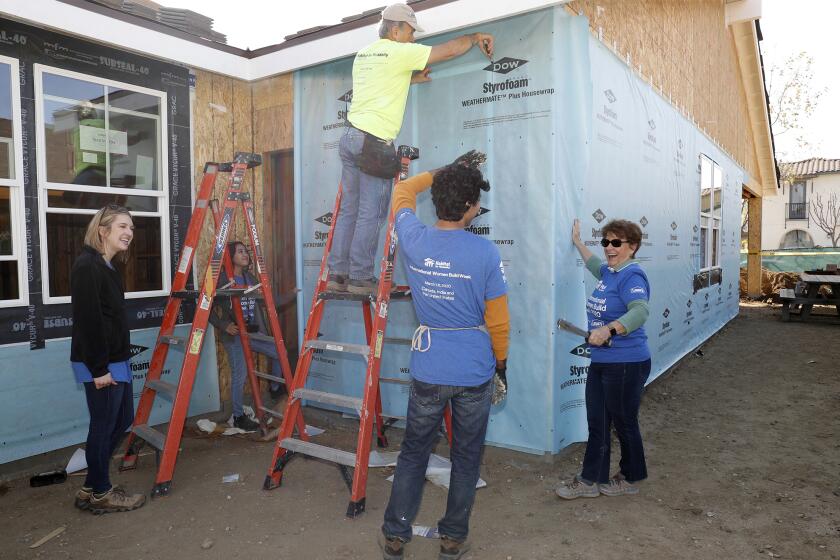Apodaca: Public schools face a decline in enrollment, exacerbated by the pandemic

- Share via
Three years ago I wrote about the long-term trend of shrinking public school enrollment, driven largely by falling birth rates.
But something happened on the way to a steady, fairly predictable decline in the school-age population based on demographic and migratory patterns. COVID-19 threw education into chaos and accelerated the enrollment losses, leaving many districts — also grappling with high levels of chronic absenteeism and a host of other issues — forced to make increasingly difficult decisions about how to plan for the future.
This nationwide phenomenon is felt keenly in California, where slightly more than 5.89 million students attended public schools at the start of the 2021-22 academic year. That represented a substantial loss of 110,283 students, or 1.8 percent, from the previous year, and continued a multiyear string of enrollment declines, including a record 2.6% drop a year earlier, according to the state Department of Education.
In Orange County, where the high cost of living is also believed to be a contributing factor as families move to more affordable areas further inland, public school enrollment fell to 448,729 in the last school year from 456,572 the year before, and well below the peak of 515,464 in 2003-04.
Complicating the picture is the fact that enrollment declines have not been evenly distributed. Some districts have seen larger decreases, and there are differences among ethnic and racial groups and by grade level. School administrators face a complex task analyzing the data and are confronted with many questions that aren’t easily answered.
Have some parents merely delayed sending their kids back to school, even though most campuses are fully reopened? Is economic distress largely to blame? If pandemic restrictions were a driving factor, why aren’t more students returning now that mask mandates and other measures have eased?
Where are the missing students going? Did they move away, switch to private schools, or are they being homeschooled? Have some just dropped out?
Will we see a rebound, or are some COVID-related losses permanent?
These are far more than academic questions. In California, public schools receive funding based on daily attendance. Declines in student populations and lower attendance numbers can impact the financial well-being of schools, which remain burdened by high levels of fixed costs and demands to improve student outcomes.
Patrice Apodaca sees a lot of potential positives if young Americans are asked to help confront homelessness and climate change, among other pressing needs, through obligatory service to the nation.
Pending legislation that would base funding on enrollment, rather than attendance, would be a positive step, but it wouldn’t solve the most pressing issues.
A prospective decline in funding for some schools is particularly worrisome considering that we’ve gone through a period of significant learning losses and higher levels of student mental-health issues stemming from the pandemic. Also, the difficulties schools are encountering in attracting and retaining skilled teachers could worsen.
“We were getting to the point where we were getting good at predicting,” said Fermin Leal, chief communications officer for the Santa Ana Unified School District. “The pandemic put a big wrench in it.”
In the early 2000s, Santa Ana Unified was bursting at the seams with about 60,000 students, and that created a raft of other issues for the district to contend with — crowded classrooms, portables on campus, overworked staff and stretched resources.
But that was then. After years of steady declines, the district is now projecting about 43,000 students for the school year that will begin Aug. 15, down from 44,500 the year before.
“It’s still very fluid,” said Leal, but he anticipates that over the next decade numbers could reach as low as the high 30,000s.
In the past four years, six of the district’s schools were merged into three, and Leal said further consolidation can’t be ruled out. Staffing levels have taken a hit, and the focus now is on targeting areas of greatest need.
Federal and state pandemic relief funds have helped soften the impact so far. Santa Ana Unified used a large share of that funding to target “wellness,” Leal said, because the community was hit hard by COVID-19. Many students lost relatives and experienced severe trauma, so the district hired more school counselors and psychologists.
Families also suffered extreme financial burdens, so that has been another area of focus. Homelessness and housing insecurity worsened, and the district has entered partnerships with organizations such as food banks and housing agencies to provide greater assistance.
But the government aid will dry up in a few years, and at that point many districts could face a harsh future of stingier budgets and uncertain outlooks.
As public schools struggle with the seismic changes wrought by long-term forces, as well as the shock of the pandemic, it’s important to remember that the issues they face are far more than a numbers game.
Even before COVID, education was in a bad state. In virtually every way imaginable — reading and math levels, the teacher brain drain, outdated teaching methods, the list goes on — we have been failing. Now the threat of funding cutbacks, which would disproportionately impact the students most in need, could set us back even further.
Short-term patchwork won’t cut it. Big changes to public education, starting with the way we fund schools, are necessary. We know this. The most salient question that remains unanswered is whether we have the will to do something about it.
All the latest on Orange County from Orange County.
Get our free TimesOC newsletter.
You may occasionally receive promotional content from the Daily Pilot.





